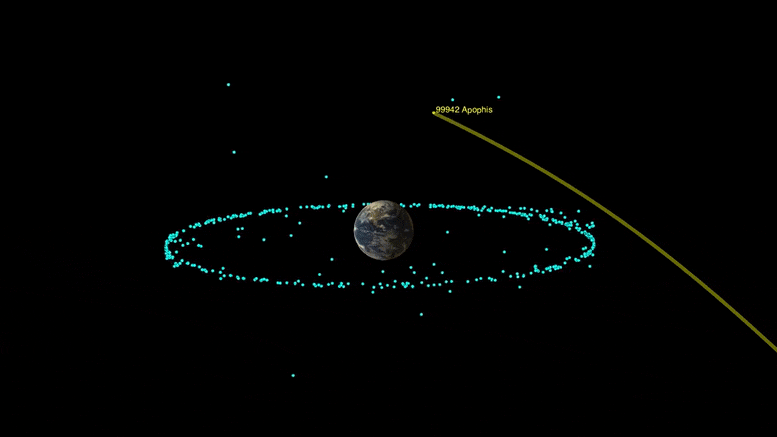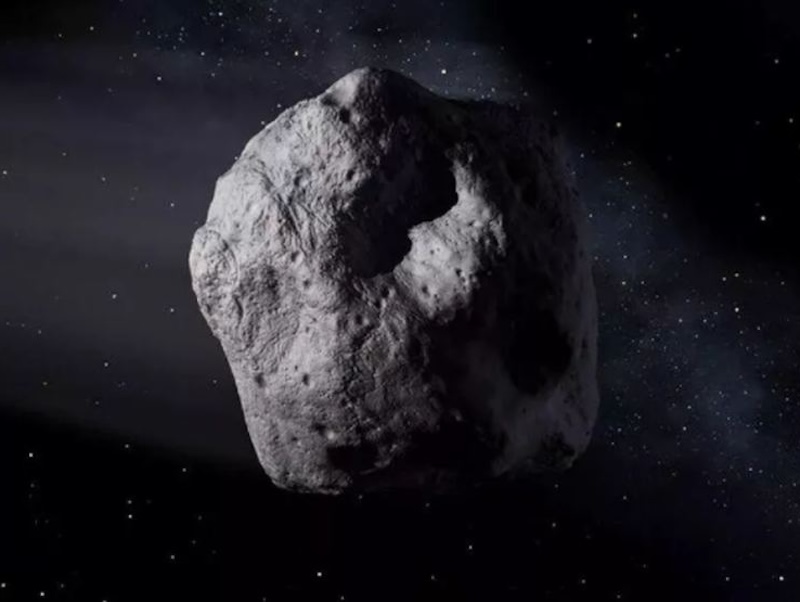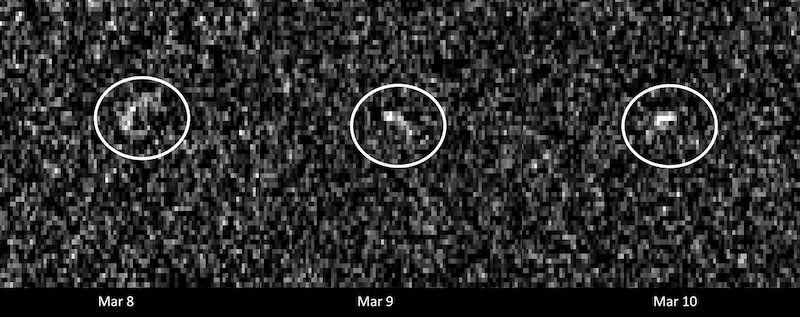
NASA’s OSIRIS-REx was a historic space mission, which brought the first samples from asteroid Bennu back to Earth. The spacecraft remains in good condition and still has a quarter of its fuel left. So NASA has redirected the craft to a new destination. It’s now on its way to the infamous asteroid Apophis, once thought (but no longer thought) to be on a possible collision course with Earth. After a long journey, the craft will reach Apophis in April 2029, just as the asteroid is sweeping past Earth.
And NASA has given the mission a new name. It’s now called OSIRIS-APEX, short for Origins, Spectral Interpretation, Resource Identification, and Security – Apophis Explorer.
The 2024 lunar calendars are here! Best New Year’s gifts in the universe! Check ’em out here.

OSIRIS-APEX: A new destination and a new name
OSIRIS-REx’s mission at asteroid Bennu was an incredible success. It safely returned the samples of the asteroid to Earth on September 2023. Afterwards, since the spacecraft was still in excellent condition, with leftover fuel, NASA aimed the craft toward a new object to explore. NASA had considered various comets and even Venus, but ultimately decided on the asteroid Apophis.
Unlike Bennu, which is carbon-rich, Apophis is composed of nickel-iron and silicate materials. Asteroids are generally categorized as C-type, S-type or M-type. Apophis is an S-type asteroid, while Bennu is a C-type. Apophis is small, about 1,100 feet (340 meters) across.
Why to visit Apophis?
One primary reason that NASA chose Apophis is that it will pass closely to Earth on April 13, 2029. The asteroid is estimated to come within 20,000 miles (32,000 km) of our planet. It will not strike Earth in 2029. In fact, scientists ruled out a strike by asteroid Apophis for at least the next 100 years.
So if Apophis isn’t due to strike us, why should we study it? Apophis is categorized as a Near-Earth Object (NEO). And some NEOs can pose a danger and are referred to as being potentially hazardous. As it happens, most potentially hazardous asteroids are also S-types. So it would be good to learn more about them!
OSIRIS-APEX will observe the asteroid just after its closest pass to Earth. As Amy Simon, project scientist for OSIRIS-APEX at NASA’s Goddard Space Flight Center in Greenbelt, Maryland, said:
OSIRIS-APEX will study Apophis immediately after such a pass, allowing us to see how its surface changes by interacting with Earth’s gravity.
It’s a rare chance to get such a good look at Apophis, as it only passes this close to Earth once every 7,500 years.

A natural experiment
Although the asteroid won’t affect Earth at all, the Earth’s much greater gravity will affect the asteroid. In fact, it can change the orbit of the asteroid slightly, as well as the length of its day. Right now, one day on Apophis is 30.6 hours long. That’s how long the asteroid takes to spin once on its axis. Earth’s gravitational pull could even cause quakes and landslides on the asteroid. Dani Mendoza DellaGiustina, principal investigator for OSIRIS-APEX at the University of Arizona in Tucson, said:
The close approach is a great natural experiment. We know that tidal forces and the accumulation of rubble pile material are foundational processes that could play a role in planet formation. They could inform how we got from debris in the early solar system to full-blown planets.

What happens in 2029?
While en route to Apophis over the next several years, OSIRIS-APEX will conduct six close passes of the sun. In addition, it will also make three close passes of Earth for gravity assists. These will all help put the spacecraft on the right trajectory to reach Apophis in 2029.
So, what will happen when OSIRIS-APEX gets there? First, the spacecraft will start taking images around April 2, 2029. And astronomers on Earth will be able to observe Apophis during this period. Also, the spacecraft will continue to monitor the asteroid after its closest approach to Earth. For telescopes on Earth, however, Apophis will be too close to the sun in the sky at that time.
OSIRIS-APEX will repeat many of the same observations that it did at Bennu when it was OSIRIS-REx. It will again use its imagers, spectrometers and a laser altimeter. And, just like at Bennu, it will use its thrusters to come within 16 feet (5 meters) of the asteroid’s surface. The only difference this time is that it won’t be able to collect any samples.
If history is any indicator, Apophis may have surprises for us, as Simon noted:
We learned a lot at Bennu, but now we’re armed with even more questions for our next target.
Bottom line: NASA’s OSIRIS-REx mission to asteroid Bennu was a great success. Now, the spacecraft has been renamed OSIRIS-APEX and is heading to asteroid Apophis.











